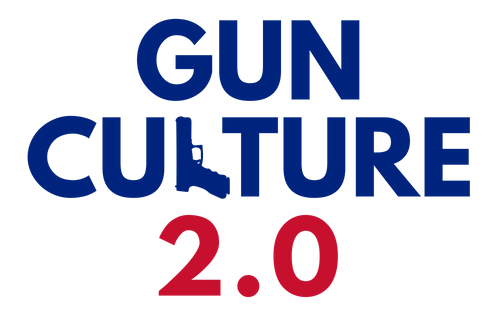For the chapter of my book which will cover the guns and gear of Gun Culture 2.0, I am doing some background work on the history of firearms. What’s been constant and what has changed over time, especially with the evolution from Gun Culture 1.0 to Gun Culture 2.0?
While thinking about how best to approach this huge issue within the limits of my time, money, and intelligence, I was greatly helped by Paul Carlson of the Safety Solutions Academy podcast. Carlson compared “gun evolution” to the aging process (Episode 417, 5 January 2017, “The Smith & Wesson M&P M2.0 and Gun Evolution”). Because aging is very gradual — it happens every day, in fact! — we often don’t see the changes in ourselves or those around us. But if we look at a photo of ourselves or our kids from 10 or 20 years ago, the changes are abundantly clear.
Carlson argues the same is true of gun evolution. Lots of small, incremental changes take place all the time so we don’t often recognize how much change that adds up to over time.
This inspired me to look not at recent changes in handguns, but to jump into my biblio-time machine and go back a few decades to see what the state of self-defense handguns was prior to the “shall issue” concealed carry revolution of the mid-1980s. I pulled two books by Massad Ayoob off my shelf. His justly famous In the Gravest Extreme: The Role of the Firearms in Personal Protection (1980) and his less well-known but more comprehensive The Truth About Self-Protection (1983).
In the earlier book (Chapter 13: Choosing a Gun for Defense), Ayoob advises:
“…the snub-nose is the best all-around choice for a number of reasons. It is compact enough to be carried when bigger, easier-to-shoot weapons would be left at home. Also, it is small enough to be transferred to the pocket, where it may be held in discreet readiness. True, a full frame 4 inch barrel revolver is easier to shoot well, but the difference is not greatly significant at the point-blank ranges where most civilian shoot-outs occur” (p. 95)
His top choice was the Colt’s Detective Special, followed by the Smith & Wesson Chief’s Special followed by the Smith & Wesson Bodyguard (all .38 Special).
He also mentions service-size revolvers (4″ barrels). “Awkward to carry,” he observes, “they are easier for a novice to shoot accurately” (p. 96). A definite trade-off.
Service automatics, according to Ayoob, offer some advantages over the revolver:
“With greater firepower and ease of shooting, these guns are excellent combat tools in the hands of one who keeps them clean and feeds them the right ammunition. As a combat weapon, the automatic’s firepower – 8 to 14 shots – and easy, rapid reloading make it superior to the revolver.”
And they are “only slightly bulkier than the snub-nosed .38’s” (pp. 97-98).
Among these he recommends the Colt 1911 in .45 and the Browning Hi-Power in 9mm. The Smith & Wesson Model 39, according to Ayoob, only reliably fed full-jacketed bullets, not hollow points, and the light frame made for greater recoil.
The Truth About Self-Protection replicates much of Ayoob’s views from the earlier book. For the expert, he favors the autoloading pistol; for the novice, the snub-nosed revolver:
“For the person just getting into guns, the double-action revolver is the obvious choice. It offers safety and reliability a dimension beyond the over-the-counter automatic pistols, and the five or six .38 or .357 rounds they hold will be all you’ll need in most personal or home defense situations” (p. 354).
But Ayoob does include some new thoughts three years later. Most notably,the third generation of the Smith & Wesson 9mm auto-loader has “greater durability and reliability” than previous versions and is more highly recommended, even if the 1911 remains the “ultimate gunfighting pistol” for experts (p. 357).
Certainly the snub-nose revolver is not as widely embraced today as it was in 1980. In addition, missing from these snapshots from three decades ago compared to today are: (1) the ability of quality auto-loading pistols today to cycle hollow point ammunition (and the corresponding mass production of those cartridges), and (2) small single-stack 9mm pistols for concealed carry. Two aspects of contemporary gun and ammo technology that we take for granted today.
One thing that hasn’t changed is Ayoob’s overall orientation to armed citizenship. What he says in both these books is very close to what he teaches in his MAG-40 class today:
“Buy the best gun you can afford: Your life may literally depend on it one day. But remember, the gun you buy is only the fourth consideration when preparing to defend your life against armed criminal assault. Most important is mental awareness and preparedness; the second consideration is a knowledge of tactics that will allow you to evade and defeat armed attack; the third consideration is skill with the safety equipment (in this case, your ability to shoot well under stress), and only after all that has been achieved does it matter whether you’re carrying a Harrington & Richardson .22, or a Smith & Wesson .44 Magnum” (p. 359).
In other words: Software > Hardware.



Reblogged this on Brittius and commented:
Everything that Ayoob has written or videoed, is excellent, and highly recommended. More recently, Ayoob’s videos on courtroom proceedings, if a person is involved in a self-defense shooting, is invaluable.
LikeLiked by 1 person
Haven’t seen those videos. Can you link to them?
LikeLike
With pleasure, professor. I am linking one, and you will observe an entire series, of video productions, that are most invaluable to any practitioner or student of the martial art of being armed.
LikeLiked by 2 people
[…] https://gunculture2point0.wordpress.com/2017/06/11/massad-ayoob-on-guns-early-1980s-edition/ […]
LikeLike
[…] Massad Ayoob on Guns, Early 1980s Edition […]
LikeLike
[…] Massad Ayoob on Guns, Early 1980s Edition […]
LikeLike
[…] Massad Ayoob on Guns, Early 1980s Edition […]
LikeLike